No Signature Necessary! – Chicha Bowls
PRIMITIVE - Friday, May 01, 2015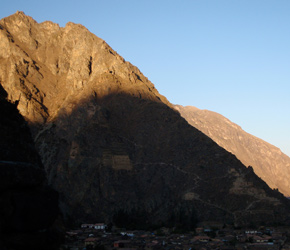 |
|
By Misaki Imagawa
As dawn broke over the crests of the Andes, the silhouette of a lone traveler navigating a high ridge was no more than a speck. An alpaca followed at his heels bearing several packs, blankets and wedding gifts. Slowly, the pair descended deeper into a valley dotted with plowed fields and windowless houses made of thrush. The year was 1808 and unrest was growing in many areas of colonial South America. News had recently reached of Napoleon Bonaparte dethroning the Spanish king and replacing him with his brother. The ground was ripe for rebellion in the colonies where even those of Spanish descent were dissatisfied with colonial rule. Among them was Sebastian, who grew up in the silver mining city of Potosi. He had seen firsthand the ill-treatment of native workers and had suffered the loss of his good friend, Alca, to the merciless mines.
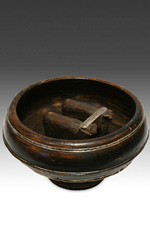 |
|
Sebastian now made his way down the treacherous mountain path with his alpaca and finally reached one of the dwellings. A young woman rushed out and embraced him. She was Naira, Alca’s sister. It was a bittersweet moment for them. They were in love and to be married, but it had been Alca’s death that had brought them together. Naira came from a lineage of pure Incan ancestry while Sebastian was a full blooded Spaniard. But he was happy to embrace the Incan culture that Naira’s family had held onto and practiced for centuries. Throughout the day they participated in several rituals and gift exchanges while a celebratory feast was prepared. But they would only begin eating when the marriage contract had been signed. To Sebastian’s surprise, Naira’s grandmother brought out a wooden bowl filled with chicha, a fermented alcoholic drink. He was familiar with the popular yellow-brown beverage but the bowl was peculiar: two carved bulls, connected with a yoke, were standing in the liquid. “To fertility and prosperity,” Naira explained. He drank from one side of the bowl, she from the other, and just like that their marriage was sealed.
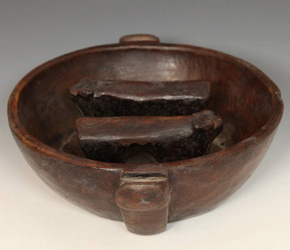 |
|
To Sebastian, and many of us today, contracts and agreements are the norm. But legal paperwork was not a widespread practice during the Inca Empire or especially among the native people. The Incas didn’t even have a written language. Instead, they used visuals and iconography to communicate and seal formal agreements through esoteric rituals involving chicha drinks and ancient bowls called quero. The drinking vessels were made of wood, ceramic, some even silver or gold, and were decorated with geometric designs or visual narratives of historical events. Particularly eye-catching are the bowls with oxen standing inside, carved from a single piece of wood. They were often used during marriage ceremonies as Sebastian learned. The two oxen bound together with a yoke were symbols to promote fertility for both the couple and their livestock. Interestingly, bulls were first imported by the Spanish but the Incan culture quickly attributed them to strength, workmanship, and the ability to bring wealth. Before the arrival of the Spanish, scholars believe the bowls were once carved depicting alpaca. Either way, when the queros were filled and the bulls were standing in a pool of chicha, it represented the abundance the animals provided people.
However the queros were not limited to matrimonial agreements. Chicha and the sharing of the drink had been used for ceremonial purposes throughout the Andes for centuries, maybe even millennia. The drink is made from a variety of grains and fruits such as cassava roots, maize, apples and grapes. The Inca culture and economy were based on the principle of reciprocity and the cosmic flow of circulating currents. Not only did this mean favors would always be returned, but also that shared consumption of chicha linked the Inca leaders, their people, and the essence of life. Sharing drinks could have been agreements for anything from promising to help with a neighbor’s fields, to selling crops or livestock, to swearing allegiance. The roles of chicha and their ceremonial vessels, therefore, were no small matter in Incan culture. Agreements, friendships and kinship were created and acknowledged through drinking chicha from the same quero. Social status and ranks could also be determined from the order in which men drank. Even today, chicha remains a popular drink in several regions of South America, where it is customary for hosts to serve quality chicha to guests.
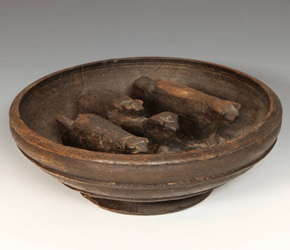 |
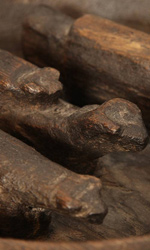 |
||
Although ceramic queros have been found in archeological sites, wooden bowls are rarer due to their decomposing nature and generally do not date as far back. Nevertheless, samples from the early 20th century reveal that the custom of sharing chicha has lived on, even in the face of colonization and war. Even though the Spanish conquest destroyed much of Incan culture while disease and prosecution killed many more, people like Sebastian and Naira persevered and helped keep the unique art and ancient traditions alive. Though conflict and struggle would continue in the regions of what used to be the Inca Empire – even long after independence – the newlywed couple would plow fearlessly on, just as the bulls that united them in marriage promised.
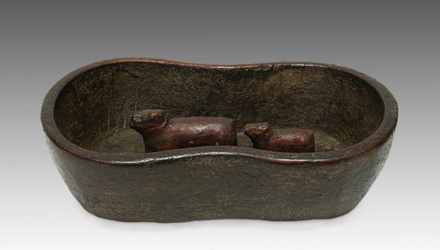 |